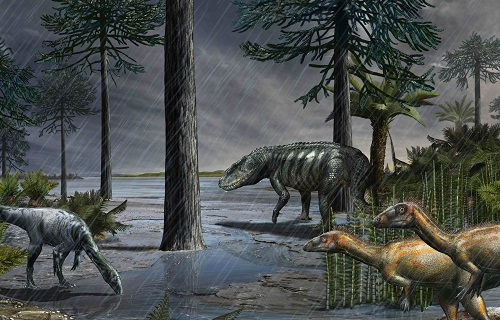
A team of scientists has discovered the 80-million-year old relative of Tyrannosaurus Rex in New Mexico and they have named it 'Dynamoterror'.
In the study report published in Peer J, scientists revealed that Dynamoterror was an apex predator that spread terror during its ancient rule. The remains of Dynamoterror were discovered in the Menefee Formation of New Mexico which was the part of an ancient continent called Laramidia.
Within the first glance, palaeontologists concluded that these fossils were of a large therapod, as its limbs were too gigantic. The forehead of the skull and parts of the feet were well preserved. Later, by using 3D scanning and printing, researchers could reconstruct what Dynamoterror would have looked like.
"Laser-scanning the frontals and creation of a composite 3-D digital model allows the frontal region of the skull roof of Dynamoterror to be reconstructed," wrote the researchers in the study.
Compared to T-Rex dinosaurs, Dynamoterror had a slightly different bone structure and they lived millions of years before T Rex started ruling the world. As per researchers who took part in the study, Dynamoterror were giant tyrannosaurid predators that mainly roamed in parts of western North America and Asia during the Cretaceous Period.
"The giant tyrannosaurids were the apex predators of western North America and Asia during the close of the Cretaceous Period," said Andrew McDonald, a Western Science Center palaeontologist and the lead author of the study.
The Dynamoterror specimen discovered in New Mexico is more than 30 feet long, and it dated back to 80 million years. It should be noted that most of the unearthed T Rex fossils often date to between 66 million and 77 million years ago.
Even though Dynamoterror dinosaurs were not as big as the T-Rex, they were surely once the most dangerous predators who ruled the planet.









